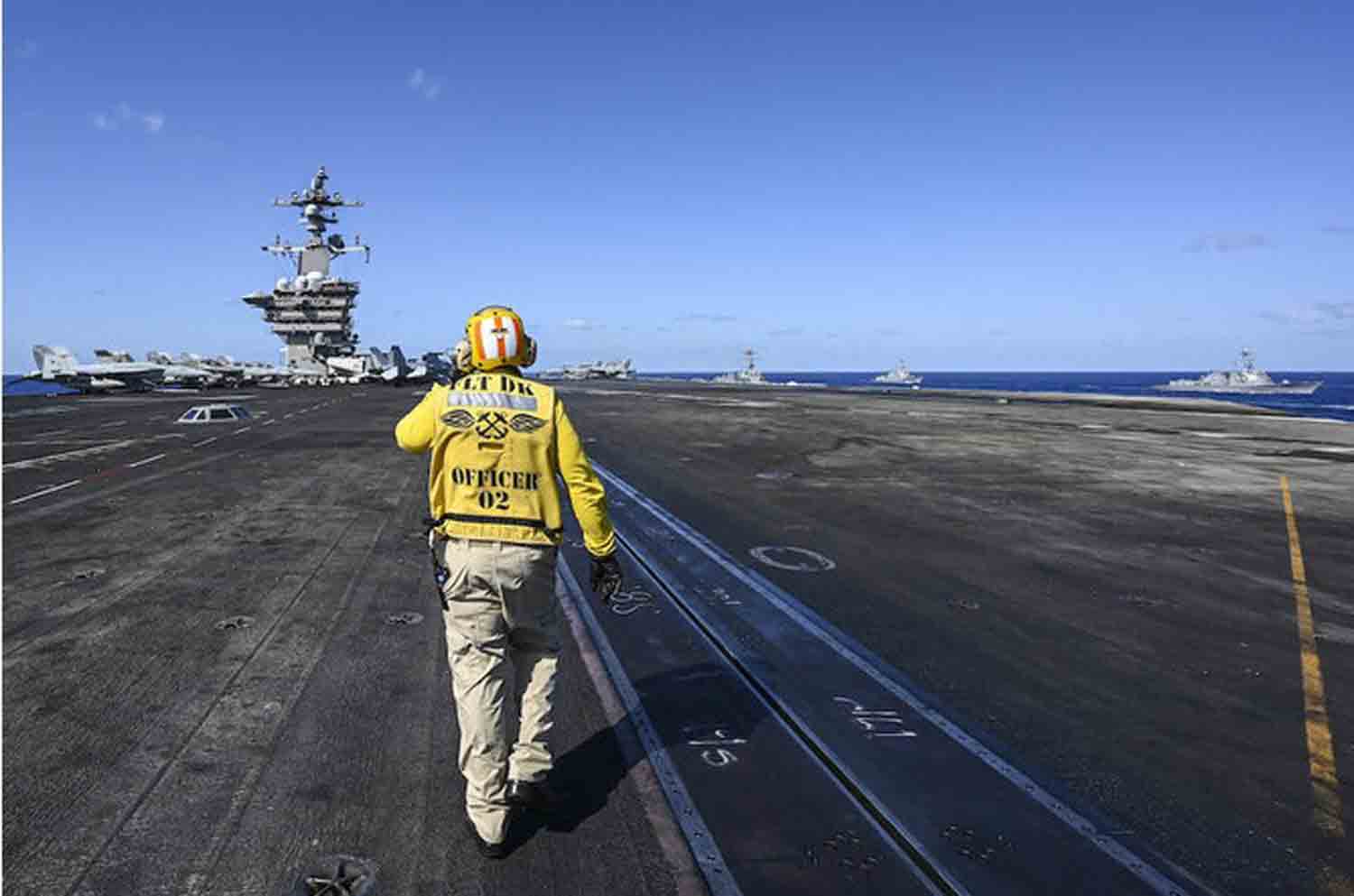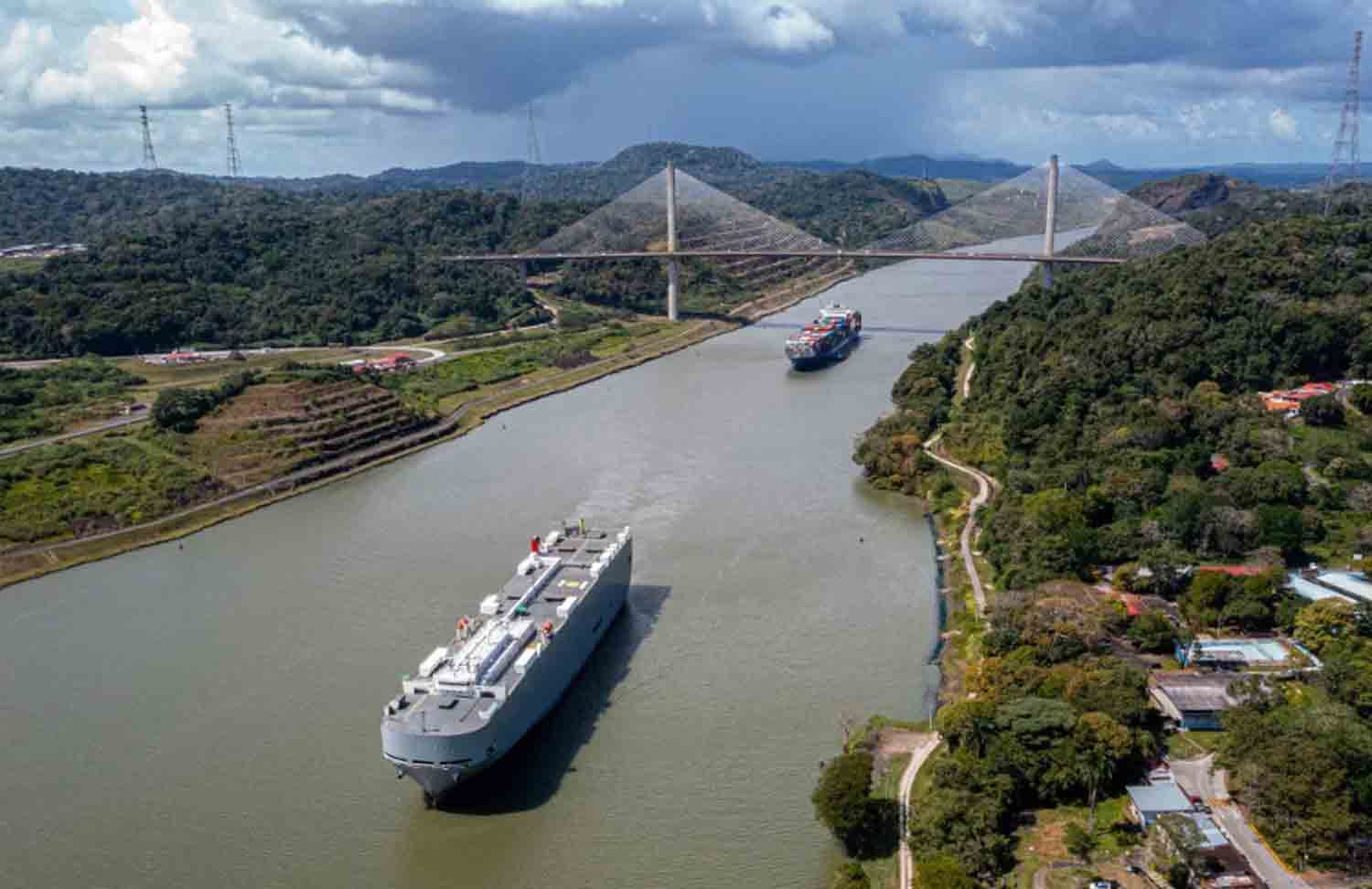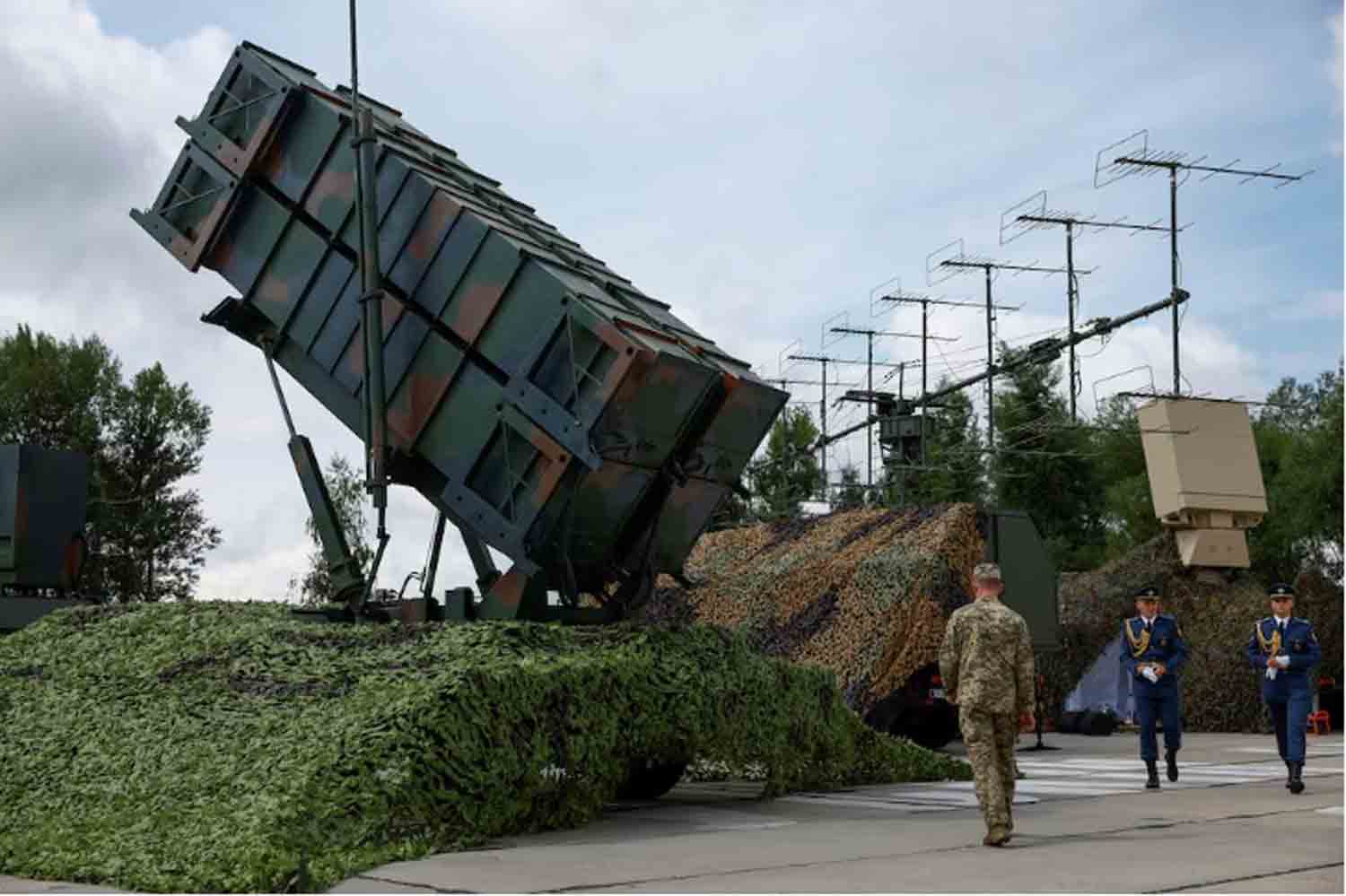On a recent Friday, the USS Carl Vinson, a nuclear-powered aircraft carrier and the flagship of its carrier strike group, navigated through the Malacca Strait, embarking on an important mission from the Western Pacific to the Middle East.
This deployment, authorized by U.S. Defense Secretary Pete Hegseth, is intended to support the USS Harry S. Truman Carrier Strike Group in its operations against the Houthi rebels in Yemen, who have increased their assaults on shipping routes in the Red Sea.
This action is part of a broader escalation of the American military presence in the region, with the Vinson anticipated to arrive in under two weeks to enhance the efforts of U.S. Central Command.
This notable naval operation highlights Washington’s commitment to addressing the rising threat from the Iran-supported Houthis and ensuring stability in a crucial maritime passage.
The USS Carl Vinson, a Nimitz-class aircraft carrier, represents a formidable display of American military strength. Commissioned in 1982, this 1,092-foot vessel has a full load displacement of over 100,000 tons and can accommodate up to 90 aircraft, including fighters, helicopters, and support planes.
For this deployment, it is accompanied by Carrier Air Wing 2, a versatile unit featuring some of the Navy’s most advanced aircraft. Notably, it includes the F-35C Lightning II, a fifth-generation stealth fighter designed for precision strikes and air dominance, capable of carrying 18,000 pounds of munitions over distances greater than 600 miles.
Supporting the F-35C is the F/A-18E/F Super Hornet, a versatile twin-engine fighter renowned for its dependability and flexibility. It is capable of delivering precision-guided munitions, such as the Joint Direct Attack Munition (JDAM), with exceptional accuracy. These aircraft equip the USS Vinson with long-range strike capabilities, essential for targeting Houthi positions deep within Yemen while remaining safely in international waters.
The air wing also features EA-18G Growlers, which specialize in electronic warfare by disrupting enemy radar and communications, as well as E-2D Hawkeyes that provide airborne early warning, significantly enhancing the strike group’s situational awareness over vast distances.
Accompanying the Vinson are several warships that bolster its operational capabilities and defensive measures. The guided-missile cruiser USS Princeton (CG-59), a Ticonderoga-class vessel, contributes the advanced Aegis Combat System, a sophisticated array of radar and missile launchers that can track and engage multiple aerial threats simultaneously. Its SM-6 missiles are capable of intercepting aircraft, drones, and even ballistic missiles at ranges exceeding 150 miles.
Additionally, the destroyer USS Sterett (DDG-104), an Arleigh Burke-class ship, enhances the group’s firepower with its own Aegis system, Tomahawk cruise missiles for land strikes, and anti-submarine warfare capabilities provided by its onboard MH-60R Seahawk helicopters. Together, these vessels create a protective barrier around the carrier, allowing it to operate freely while projecting power ashore.
In comparison to other naval forces, such as Russia’s aging Admiral Kuznetsov and China’s Liaoning, the Vinson strike group stands out for its advanced technology and combat endurance, reflecting years of American commitment to carrier aviation.
The voyage to the Middle East is far from straightforward. The Malacca Strait, a narrow passage between the Malay Peninsula and Sumatra, acts as a critical chokepoint for international trade, with more than 80,000 vessels navigating it each year. For the Vinson strike group, traversing this 500-mile corridor involves significant logistical and tactical hurdles.
The shallow depths and dense traffic of the strait necessitate meticulous coordination, while its strategic significance raises the likelihood of surveillance or interference from regional powers like China, which has a substantial naval presence in the adjacent South China Sea.
As reported by USNI News, the Vinson’s journey was monitored through Automatic Identification System (AIS) data and corroborated by ship spotters as it passed through the Singapore Strait before proceeding northward through the Malacca Strait. Ensuring the safety of this route demands continuous vigilance, with the strike group’s helicopters and radar systems prepared to detect any potential threats, ranging from small vessels to electronic jamming efforts.
Upon entering the Indian Ocean, the Vinson will travel thousands of miles to reach the Red Sea, underscoring the urgency of its mission. This two-week journey exemplifies a strategic balance between speed and sustainability, enabling the crew to remain prepared while efficiently managing fuel and resources for the 5,000 sailors on board.
The swift transition of naval forces from the Pacific to the Middle East highlights the Navy’s exceptional global adaptability, a trait that few military organizations can rival. The deployment of a second aircraft carrier to accompany the USS Truman, which is currently involved in operations against Houthi positions, indicates an escalation in U.S. initiatives aimed at diminishing the rebels’ capacity to disrupt maritime activities.
As Chief Pentagon Spokesman Sean Parnell emphasized, “Secretary Hegseth has made it clear that if Iran or its affiliates pose a threat to American personnel and interests in the region, the United States will respond decisively to protect our people.”
The Houthis, a Shia militant faction that has gained control over significant portions of western Yemen, have transformed from a localized insurgency into a significant regional menace. Since late 2023, they have been targeting commercial ships in the Red Sea using drones, cruise missiles, and ballistic missiles, often in support of Palestinians during the Israel-Hamas conflict.
Their weaponry, enhanced by Iranian backing, includes the Quds-1 cruise missile, which has a range of approximately 500 miles, and cost-effective Shahed-136 drones, akin to those employed by Russia in Ukraine. Although these weapons may not match U.S. technology in sophistication, they leverage asymmetry—being inexpensive, numerous, and difficult to detect—thereby presenting a continuous challenge to naval defenses.
A significant incident occurred earlier this month when the Houthis claimed responsibility for a coordinated missile and drone strike on the USS Harry S. Truman in the Red Sea, although the U.S. Navy has not verified any damage. This increasing level of sophistication has compelled American military planners to adjust their strategies, utilizing layered defense systems such as Aegis and Growler jamming to mitigate the threat.
For the strike groups of the USS Vinson and USS Truman, this creates a challenging operational landscape. The air wings of the carriers are tasked with executing precise strikes on Houthi launch sites, command centers, and weapon stockpiles, which are frequently situated in difficult terrain or urban environments.
The F-35C’s advanced stealth capabilities and sensor integration provide a significant advantage in detecting targets hidden within Yemen’s rugged terrain, while the Super Hornet’s increased payload capacity allows for the deployment of heavier munitions against fortified sites. At the same time, destroyers and cruisers are prepared to intercept incoming missiles or drones, a challenge complicated by the Houthis’ use of decoys and swarm tactics.
According to the Institute for the Study of War, the Houthis executed three coordinated attacks on the USS Truman in a single day, underscoring the intensity of the ongoing conflict.
Beyond the immediate military engagement, the presence of two aircraft carriers conveys a larger strategic message. The Middle East has historically served as a testing ground for U.S. naval strength, from the Gulf War in 1991, when carriers like the USS Theodore Roosevelt conducted numerous sorties, to Operation Enduring Freedom in 2001, where the USS Vinson played a pivotal role in the initial strikes on Afghanistan.
Currently, with both the Truman and Vinson deployed, the Navy demonstrates its capability for sustained operations across various fronts. This military presence not only targets the Houthis but also acts as a deterrent against Iran, which supports the rebels and has issued threats of retaliation.
Iran’s Supreme Leader, Ayatollah Ali Khamenei, recently issued a warning of a “firm retaliatory strike” in response to any actions taken by the U.S. or Israel, a statement that carries significant weight amid rising tensions surrounding Tehran’s nuclear ambitions.
Other global powers are observing these developments closely. China, with its growing naval capabilities, including the recently active carrier Shandong in the South China Sea, stands to gain indirectly as the USS Vinson’s departure from the Pacific redirects U.S. attention westward.
Russia has also expressed interest, as Navy jets from the USS Vinson intercepted a Russian reconnaissance aircraft near the carrier in the Sea of Japan earlier this month. This incident highlights the ongoing global competition, even in the midst of regional conflicts. The simultaneous deployment of two carriers in the Middle East may signify a revival of “carrier diplomacy,” where military strength influences the decisions of adversaries without engaging in direct conflict.
However, the human aspect remains vital. The 5,000 sailors aboard the Vinson, along with the crew of the USS Truman, are enduring challenging conditions as this deployment intensifies an already rigorous schedule. Long hours on the flight deck, frequent threat alerts, and time away from their families test their endurance.
The Navy has a rich history of withstanding such pressures—during the Gulf War in 1991, carrier crews achieved a 90% sortie rate over 38 days. Yet, the current operational tempo, which includes near-daily strikes on Yemen, is pushing the limits of their capabilities. The psychological strain of confronting an unpredictable adversary like the Houthis, whose unconventional tactics challenge traditional warfare, adds further stress.
On the physical front, maintaining aircraft and systems in the harsh environment of the Red Sea, characterized by extreme heat and sand, requires continuous effort. These challenges will ultimately influence how long the Navy can maintain this dual-carrier presence without jeopardizing readiness in other areas.
The deployment of the USS Carl Vinson to the Middle East signifies the changing nature of contemporary warfare and America’s steadfast dedication to protecting its interests. The Houthis, equipped with drones and missiles, exemplify a new type of enemy that utilizes straightforward tactics to confront advanced military capabilities.
The Vinson and Truman, featuring state-of-the-art technology and experienced personnel, represent the U.S. strategy: a combination of overwhelming force and precision. However, as this operation progresses, uncertainties remain. Is airpower sufficient to defeat a determined insurgency entrenched in Yemen’s intricate tribal and political dynamics?
Moreover, what are the implications if Iran intensifies its involvement, potentially transforming a localized conflict into a broader confrontation? For the moment, the aircraft carriers serve as vigilant guardians, their planes soaring through the night, symbolizing determination and highlighting the significant risks in an increasingly unstable global landscape.
Discover more from Defence Talks | Defense News Hub, Military Updates, Security Insights
Subscribe to get the latest posts sent to your email.





